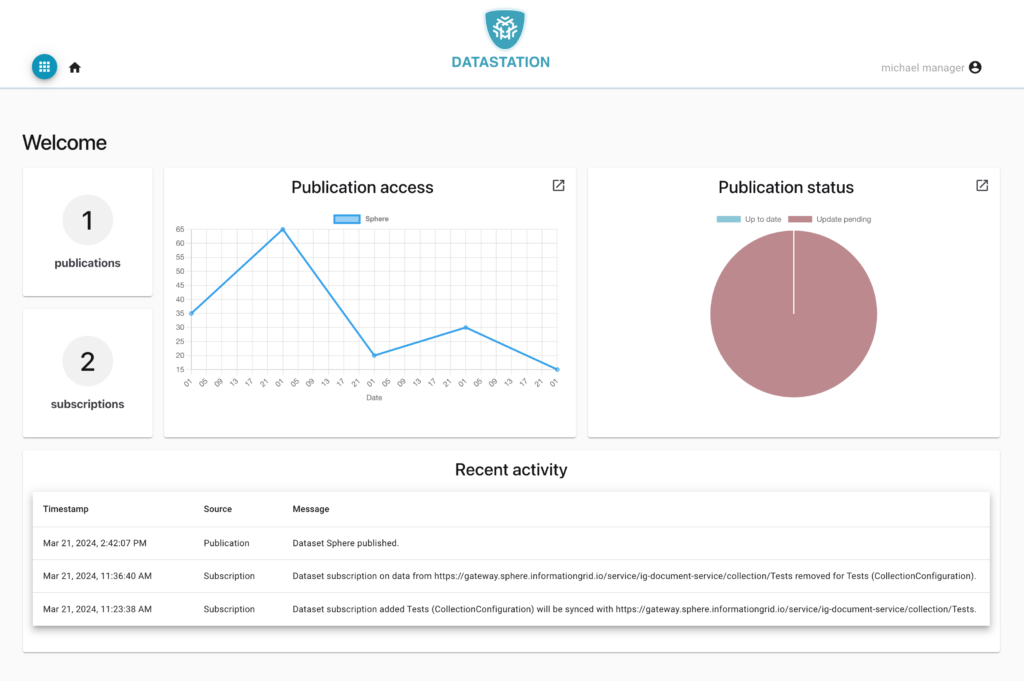With the 2024.2 release, a new type of services is introduced on top of the InformationGrid platform: data sharing services. Therefore, these and future releases notes will be split into “InformationGrid Platform” and “Data Sharing Services”.
InformationGrid Platform
New IG web components version
With this new 2024.2 release, the IG web components are updated as well. Please upgrade to version 2.0.1. See for more information https://www.npmjs.com/package/informationgrid-webcomponents and the belonging documentation on IG Web components documentation. Chart web component
With this release we announce a new web component to visualise data as a chart. Users can create a chart configuration defining which data should be visualised and how. Currently Pie, Bar and Line charts are supported. More information can be found in the documentation.


Web components documentation available
As of now, the web components are fully documented and available for all users. All input properties, methods, emitted events and so on are published per component. See IG Web components documentation for the documentation.
Duration in trace
All traces in the trace browser now display the duration in milliseconds. This allows users to identify which processes took longer than expected and investigate why.

Other improvements and bug fixes
- Improved error message when not all required arguments are provided for a lookup.
- The resource master now correctly handles resources of which the identifier is not of type string.
Using the model-enabled and data-centric architecture of InformationGrid, a new solution is created that is aligned with the ideas of the International Dataspaces Association. This association embraces the notion of data spaces as a basic building block for the upcoming, data-driven economy in Europe.
The next illustration shows a logical view of how our data sharing services can be used to create data spaces to support federated data sharing.

Data station
This release of InformationGrid features the Data station. A Data station implements the necessary services to interact with one of more data spaces in a secure and scalable way. Data stations can be used by both data providers and data consumers. It allows users to perform the basic tasks like publishing and subscribing on data, monitoring the data that is shared, and defining the policies that control the data sovereignty. The next illustration shows as example of the user interface of a Data station of a data provider:

